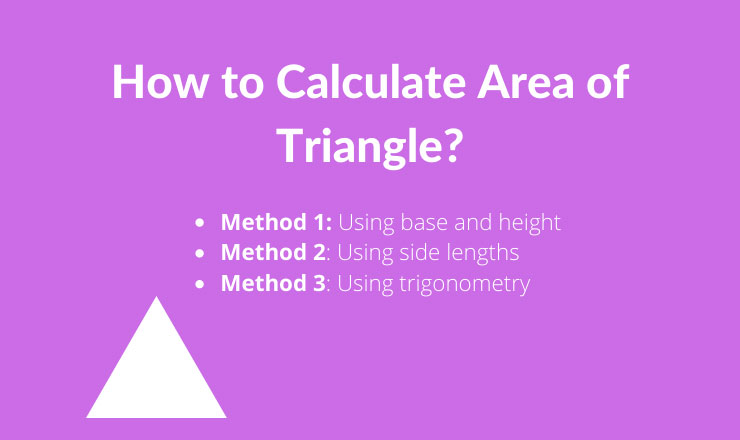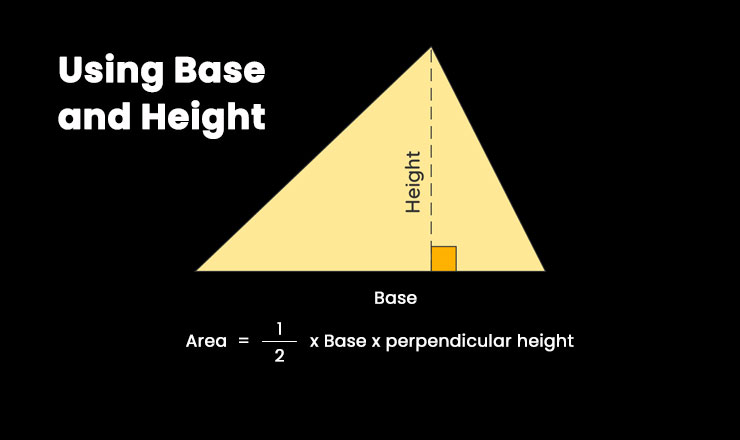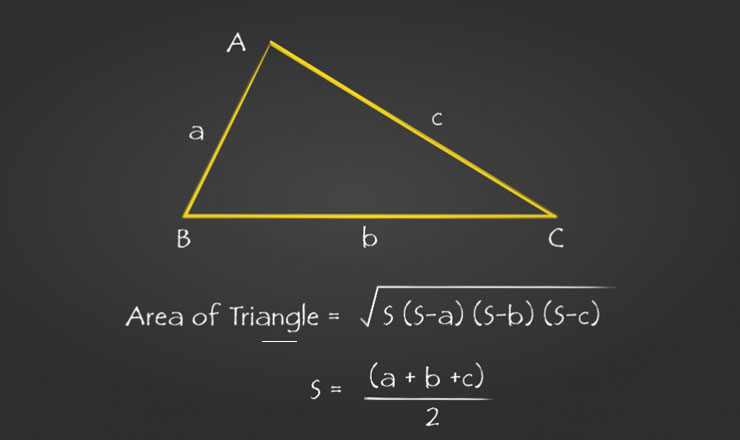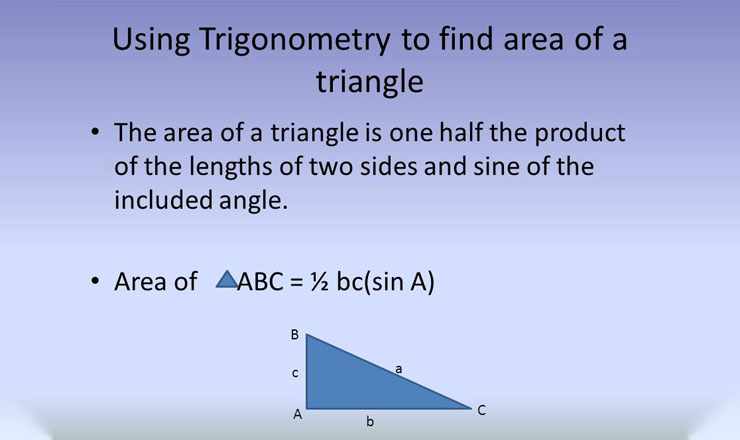Area of a Triangle Calculator
The △area may be calculated with the help of this Area of a Triangle Calculator. What if we don’t have the base and height required by the fundamental triangle area formula? How can we figure out the area with only three sides? You may use the Area of Triangle Calculator. Try it out! If you’re still confused about how to find area of a triangle, see the explanation below.
What is the Area of a Triangle?

How do you find the area of triangle? A triangle is a fixed shape with 3 sides, 3 angles, and 3 vertices. Triangle is one of the most fundamental shapes in geometry and is symbolized with “△.” There are various types of triangles in math which are categorized in the terms of their angles and sides. The area is the region fixed within the sides of a △. It varies from one to another triangle depending on the internal angles and the length of the sides. The area of the triangle is usually described in square units including in2, cm2, m2, and so on. There are various methods that will tell you how to calculate the area of triangle.
Area of a Triangle Formula – 3 Methods to Calculate the Area of Triangle
What is the formula for the area of a triangle? Below are the three methods and formula for Triangle’s area:

- Method 1: Using base and height
- Method 2: Using side lengths
- Method 3: Using trigonometry
1. Using Base and Height

By Finding the Base and Height of the Triangle:
In a triangle, the height is the measure of the tallest point on a triangle and the base is one side of the triangle. Furthermore, you can also find it by sketching a line perpendicular from the base to the opposing vertex. For example, you have a triangle whose base is 7 cm and its height is 4cm long.
Form an Area of Triangle Formula:
Now, apply the area formula of a triangle to calculate the region.
Area = 1/2 × base × height
Now put the values in the Area of a Triangle Formula:
First of all, you have to multiply the value of height and base then multiply the answer by ½. Additionally, it will give the exact triangle area in square units. For a better understanding, you can see the given example.
Area = 1/2 × base × height
A = 1/2 × 7 cm × 4 cm
A = 17.5 cm2
2. Using Side Lengths

Calculate the Semi-Perimeter of the Triangle:
You can also find the area by calculating the semi-perimeter △ which is equal to half of its perimeters. So, to find the semi-perimeter, add up the length of its three sides and then multiply the product by ½.
For example, if a triangle has three sides that are 4cm, 3cm, and 5 cm long. Then the semi-perimeter will be:
Semi-Perimeter = ½ (4+3+5)
S = ½ (12)
S = 6
Apply Heron’s Formula:
Now apply heron’s formula to calculate the area. Below is Heron’s formula:
A = √s(s−a)(s−b)(s−c)
Put Values in the Formula and Calculate it:
While placing the values in the given formula, confirm you cover the semi-perimeter for every instance of s in the formula.
Area = √s(s−a)(s−b)(s−c)
A = √6(6−4)(6−3)(6−5)
Area = √6(2)(3)(1)
A = √6(6)
A = √36
Area = 6 cm2
3. Using Trigonometry

Find the Length of two Adjacent Sides and included the Angle:
First of all, the adjacent sides are those that meet at the vortex. Besides, the angle is the angle between these 2 sides. For example, a triangle with two adjacent sides that count 231cm and 150cm in length. And the angle between them is 123°.
Now use the Trigonometry Formula for Triangle’s Area:
Now, you can use the trigonometry formula, which is given below:
Area (∆ABC) = 1/2 × bc × sin(A)
Put Values in the Formula:
Now put the values in the formula and keep one main thing in mind, here b and c are adjacent sides.
Area (∆ABC) = 1/2 × (231)(150) × sin(A)
A (∆ABC) = 1/2 × (34650) × sin(A)
A (∆ABC) = 17325 × sin(A)
Put the Values of Sine in the Formula and Multiply them:
Now find the value of sin by using a scientific calculator. And then multiply the product by 17325 to get the area.
sin(A) = sin(123)
sin(A) = 0.83867
Then;
Area (∆ABC) = 17325 × 0.83867
Area (∆ABC) = 14529.96 Thus the area of the △ is 14529.96 cm2.
You May Also Like
Area of a Circle – How to Find the Area of a Circle?
How to find the Circumference of a Circle?